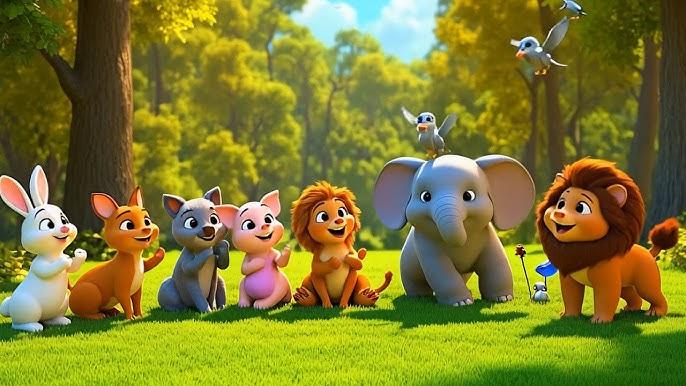AI Animation: Transforming the Future of Digital Storytelling

In today’s fast-paced digital world, AI ANIMATION is revolutionizing how stories are told, visuals are created, and characters come to life. Whether in entertainment, advertising, education, or gaming, artificial intelligence is reshaping the animation industry by offering tools that boost creativity, cut production costs, and reduce timelines. As technology evolves, AI-driven animation is becoming a powerful force behind the scenes—and sometimes, right on the screen.
What Is AI Animation?
AI-powered animation refers to integrating machine learning technologies to assist or accelerate animation creation at multiple production stages. This includes motion capture, facial expressions, lip-syncing, scene generation, background creation, and even character voiceovers.
Unlike traditional animation that relies heavily on manual frame-by-frame drawing or 3D modeling, AI animation leverages data, predictive modeling, and neural networks to generate realistic movements and visuals in a fraction of the time.
How AI Is Changing the Animation Industry
From major animation studios to solo content creators, artists are using AI to speed up tasks and explore innovative storytelling techniques.
1. Faster Production Time
AI-powered tools like motion capture software, auto-rigging systems, and generative design platforms significantly reduce the time required to animate characters and environments.
2. Automated Lip-Syncing and Voice Matching
This helps creators produce content faster without relying on expensive voice actors or manual editing.
3. Realistic Character Movements
AI-driven motion capture tools use pose estimation and deep learning to produce lifelike movements without the need for traditional motion capture suits or expensive studio setups.
Popular AI Animation Tools
Several AI animation platforms are leading the charge in automating and enhancing the creative workflow:
-
Runway ML – Offers AI tools for motion tracking, green screen removal, and scene generation.
-
Adobe Sensei – Integrates AI into Adobe's Creative Cloud for smarter video editing and animation.
-
DeepMotion – Specializes in AI-driven motion capture and animation for 3D characters.
-
Plotagon & Animaker – Tools that enable users to create animated videos using AI-powered features like voice-to-animation.
These platforms are empowering not just professionals, but also educators, marketers, and indie creators with limited technical backgrounds.
Applications of AI in Animation
AI ANIMATION is finding its way into diverse industries beyond just film and TV:
1. Advertising and Marketing
Brands are using AI-generated animation for quick, engaging ad campaigns, explainer videos, and product demos.
2. Education and eLearning
AI animation helps create interactive educational videos and training modules with characters that speak and react in real time, improving student engagement.
3. Gaming and Virtual Reality
In gaming, AI animation is used to create more realistic non-playable character (NPC) behaviors, dynamic facial expressions, and immersive VR environments.
4. Social Media and Content Creation
These AI animation tools—Lumen5, Synthesia, and Animoto—help streamline content creation for influencers targeting fast-paced platforms such as TikTok, Reels, and YouTube Shorts.
Blending Human Imagination with Artificial Intelligence
AI can generate movements and visuals, but it’s up to the animator to provide emotional depth, unique storylines, and character development.
Many artists now use AI as a co-creator—handling technical work while they focus on design, narrative structure, and direction. This collaborative approach unlocks new creative possibilities and allows artists to push their ideas further than ever before.
Challenges and Ethical Considerations
As with any emerging technology, AI animation presents challenges and concerns:
1. Job Displacement
Many worry that AI advancements could eventually replace the need for human animators. While automation may reduce demand for repetitive tasks, many experts believe AI will augment rather than eliminate creative roles.
2. Originality and Copyright
AI-generated content often draws from massive datasets, raising questions about who owns the final output and whether AI-created animations can be copyrighted.
3. Deepfakes and Misinformation
AI tools used for animation can also be misused for deepfakes or manipulated videos.It brings up serious ethical concerns surrounding trust, authenticity, and user consent.
To navigate these challenges, industry standards and ethical guidelines are being developed to ensure responsible use of AI in creative fields.
What the Future Holds for AI in Animation
The future of AI animation looks incredibly promising. As machine learning models become more advanced and accessible, creators will be able to:
-
Animate entire scenes from simple scripts
-
Create real-time interactive animations for metaverse and AR experiences
-
Seamlessly blend 2D, 3D, and real-world elements
We’re moving toward a future where storytelling is more personalized, interactive, and immersive, thanks to the seamless integration of AI into the animation pipeline.
Conclusion: A New Era of Creative Expression
AI animation is not replacing artists—it’s empowering them. From automating complex processes to enabling solo creators to produce professional-grade content, artificial intelligence is democratizing animation in exciting ways.
As tools continue to evolve, AI will redefine how we create, share, and experience visual stories. Whether you're a filmmaker, marketer, teacher, or influencer, AI animation opens up a world of creative possibilities—fast, flexible, and more innovative than ever before.
For more article click here.

